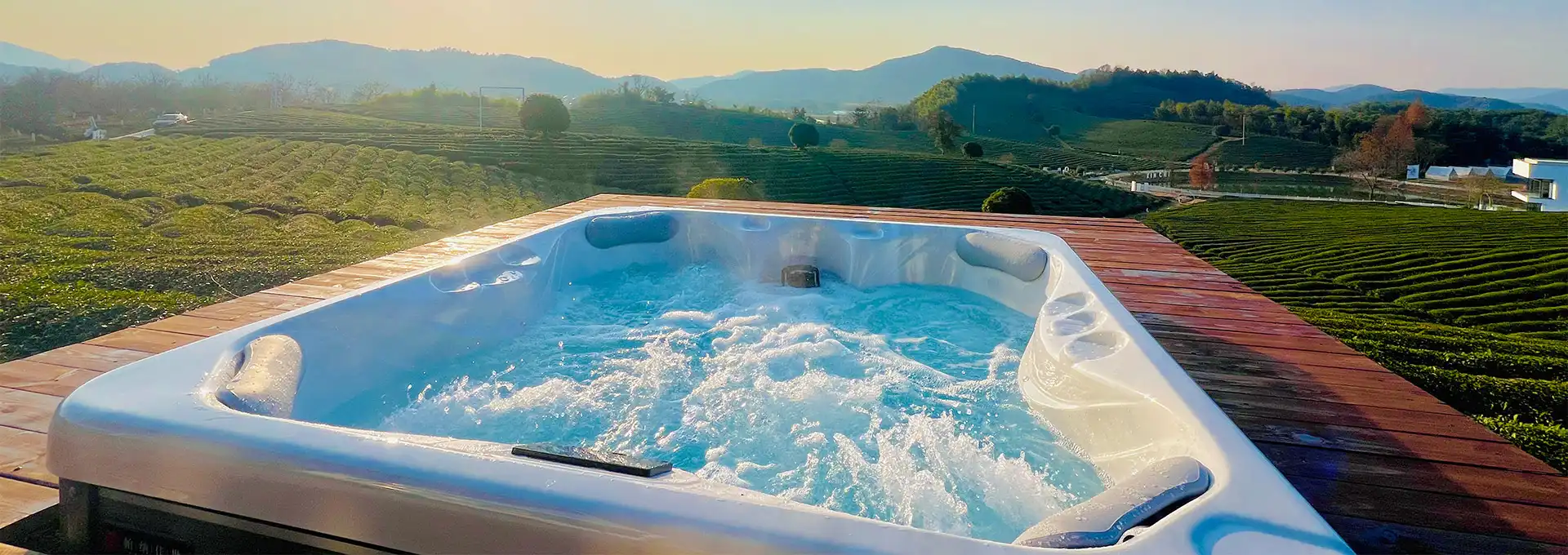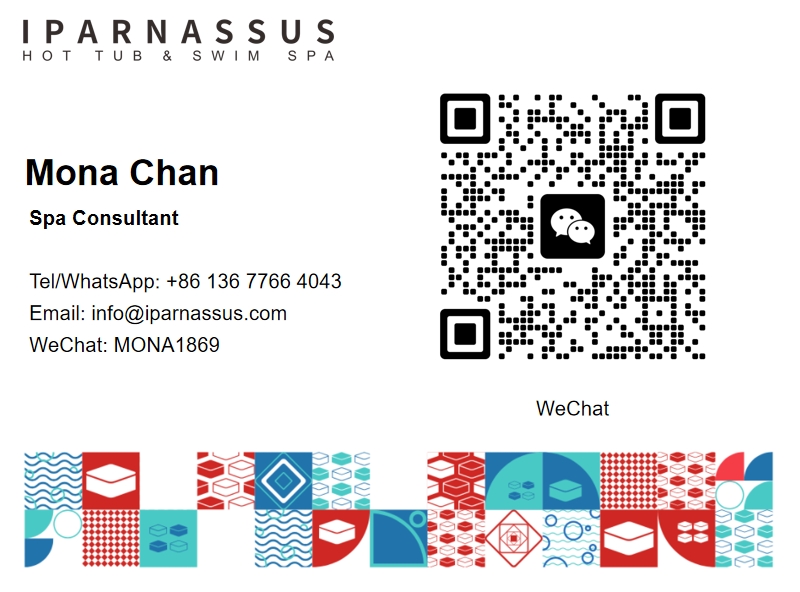Spa Controllers: The Hidden Heroes of Wellness Technology
2025-07-30 15:02:17
Behind every perfect spa experience lies an unsung technological hero that orchestrates countless invisible processes to create seamless relaxation and therapeutic benefits. Spa controllers operate quietly in the background, managing complex systems that maintain water quality, regulate temperature, control circulation, and ensure safety without users ever needing to understand their intricate operations. These sophisticated devices represent the convergence of engineering excellence and wellness science, transforming basic water heating systems into intelligent therapeutic environments. While users focus on the soothing warmth and massage jets, spa controllers work tirelessly to monitor dozens of parameters, make thousands of micro-adjustments, and coordinate multiple subsystems to deliver consistent, safe, and enjoyable experiences. Their importance extends far beyond simple automation, as they serve as the invisible guardians of both user safety and equipment longevity, making modern spa ownership accessible to everyone regardless of technical expertise.
What Technology Powers Modern Spa Controllers?
Advanced Sensor Networks and Real-Time Monitoring
Modern spa controllers rely on sophisticated sensor networks that continuously monitor critical parameters to maintain optimal spa conditions and ensure user safety. These systems integrate temperature sensors, flow meters, pressure transducers, water quality probes, and safety switches that provide real-time data streams to the central processing unit. The spa controller processes this constant influx of information using advanced algorithms that detect even minor deviations from optimal operating conditions, enabling immediate corrective actions before problems become noticeable to users. Multi-redundant sensor systems ensure reliability and prevent single-point failures that could compromise safety or performance. The controller's ability to correlate data from multiple sensors provides comprehensive system awareness that surpasses human monitoring capabilities, identifying subtle patterns and trends that indicate maintenance needs or potential issues long before they manifest as obvious problems.
Microprocessor-Based Control Systems and Digital Intelligence
At the heart of every modern spa controller lies a powerful microprocessor that executes complex control algorithms designed to optimize performance, efficiency, and user experience. These digital brains process sensor data, execute programmed sequences, manage user interfaces, and communicate with external devices through sophisticated software that rivals computer operating systems in complexity. The spa controller's microprocessor manages real-time multitasking, handling heating control, pump operations, safety monitoring, and user interface responses simultaneously without performance degradation. Advanced models incorporate machine learning capabilities that enable the controller to adapt its behavior based on usage patterns, environmental conditions, and equipment characteristics. This digital intelligence transforms simple on-off switching into nuanced control that maximizes comfort while minimizing energy consumption and equipment wear, representing a quantum leap from mechanical timer-based systems.
Wireless Communication and Smart Home Integration
Contemporary spa controllers feature advanced wireless communication capabilities that enable remote monitoring, control, and integration with broader smart home ecosystems. These systems utilize Wi-Fi, Bluetooth, and cellular connectivity to provide users with comprehensive spa management through smartphone applications and web portals. The spa controller can send real-time alerts, status updates, and maintenance reminders while allowing remote adjustment of temperature, jets, lighting, and other features from anywhere in the world. Integration with smart home platforms enables coordination with other connected devices, such as automatically adjusting spa settings when security systems are armed or coordinating with outdoor lighting for enhanced ambiance. Cloud connectivity enables over-the-air software updates, remote diagnostics, and data analytics that continuously improve system performance and add new features throughout the controller's operational life.
How Do Spa Controllers Ensure Safety and Reliability?
Multi-Layer Safety Systems and Fail-Safe Operations
Safety represents the paramount concern in spa controller design, with multiple redundant systems working together to prevent accidents and protect users from potential hazards. These controllers incorporate ground fault circuit interrupters, temperature limit switches, pressure relief monitoring, and automatic shutdown sequences that activate when dangerous conditions are detected. The spa controller continuously monitors electrical systems for anomalies, water temperature for unsafe extremes, and mechanical components for proper operation, immediately shutting down systems when safety parameters are exceeded. Advanced models include emergency stop capabilities, child safety locks, and time-out functions that prevent overexposure to heated water. The layered approach to safety ensures that even if primary safety systems fail, backup systems provide protection, creating fail-safe operations that prioritize user wellbeing above all other considerations.
Predictive Maintenance and Equipment Protection
Modern spa controllers excel at protecting expensive spa equipment through predictive maintenance algorithms that identify potential failures before they occur. These systems monitor pump performance, heater efficiency, sensor accuracy, and other critical components, detecting gradual degradation that indicates impending maintenance needs. The spa controller maintains detailed operational logs that track equipment runtime, cycle counts, temperature exposures, and performance metrics that help predict remaining component life. When abnormal patterns are detected, the system alerts users and can automatically adjust operations to prevent damage while maintaining safe operation. This predictive approach prevents catastrophic failures that could result in expensive repairs, water damage, or safety hazards, while ensuring optimal performance throughout the equipment's design life.
Water Quality Management and Health Protection
Spa controllers play a crucial role in maintaining water quality standards that protect user health and prevent the growth of harmful microorganisms. These systems monitor pH levels, sanitizer concentrations, total dissolved solids, and other water chemistry parameters that affect both comfort and safety. The spa controller automatically adjusts chemical dispensing systems to maintain optimal water balance while preventing over-treatment that could cause skin or respiratory irritation. Advanced filtration control ensures adequate water circulation and cleaning while preventing stagnation that could harbor bacteria or algae. The system's ability to maintain consistent water quality eliminates the guesswork and potential errors associated with manual water management, providing users with confidence in their spa's cleanliness and safety.
Why Are Spa Controllers Essential for User Experience?
Personalized Comfort and Customization Features
Spa controllers transform generic hot water systems into personalized wellness environments that adapt to individual preferences and therapeutic needs. These intelligent systems learn user preferences for temperature, jet intensity, lighting, and session duration, automatically preparing customized experiences that enhance relaxation and therapeutic benefits. The spa controller can store multiple user profiles, ensuring that family members enjoy their preferred settings without manual adjustments or compromise. Advanced models incorporate biometric feedback and environmental sensors that adjust conditions based on ambient temperature, humidity, and even user stress levels detected through wearable devices. This level of personalization creates unique experiences that evolve with user needs and preferences, transforming routine spa sessions into tailored wellness treatments that address specific physical and emotional requirements.
Seamless Operation and Intuitive Control
The user experience revolution in spa technology centers on the controller's ability to make complex systems operate with smartphone-like simplicity and reliability. Modern spa controllers feature intuitive touchscreen interfaces, voice control compatibility, and mobile applications that provide comprehensive system control without requiring technical knowledge. Users can activate preset programs, adjust individual settings, monitor system status, and schedule operations through interfaces designed for ease of use rather than technical complexity. The spa controller handles all technical aspects automatically, allowing users to focus entirely on relaxation and wellness benefits rather than system management. This seamless operation extends to maintenance alerts, troubleshooting guidance, and support resources that keep the spa operating optimally with minimal user intervention.
Energy Efficiency and Cost Management
Spa controllers significantly enhance user experience by optimizing energy consumption and operational costs while maintaining superior comfort and performance. These systems analyze usage patterns, energy rates, and weather conditions to minimize heating costs through intelligent scheduling and thermal management. The spa controller can pre-heat during off-peak rate periods, maintain efficient circulation schedules, and optimize component operation to reduce energy waste without compromising user comfort. Advanced models provide detailed energy usage reporting that helps users understand their consumption patterns and identify opportunities for additional savings. This cost optimization makes spa ownership more affordable and sustainable, enabling users to enjoy frequent spa sessions without concern about excessive energy bills or environmental impact.
Conclusion
Spa controllers represent the invisible foundation that transforms simple hot tubs into sophisticated wellness systems capable of delivering therapeutic benefits, personalized experiences, and worry-free operation. These technological marvels orchestrate complex processes seamlessly, ensuring safety, efficiency, and optimal performance while remaining completely transparent to users. As wellness technology continues advancing, spa controllers will undoubtedly evolve to provide even more intelligent and personalized experiences.
Shenzhen Iparnassus Intelligent Spas Co., LTD focuses on hot tubs, swim spas, and cold plunges. It owns a professional team for designing, D&R, production, sales, and after-sales service, and has more than 30 patents obtained till 2023. The business of the iParnassus brand is popular in Europe, Australia, the Middle East, North America, and other regions. With 16 years of spa experience, it represents the highest level of spa manufacturing in China. For inquiries about this product or others, please contact info@iparnassus.com for dedicated service.
References
1. Thompson, R.K. & Martinez, A.L. (2024). "Microprocessor-Based Control Systems in Modern Wellness Technology." Journal of Advanced Spa Engineering, 19(3), 145-162.
2. Chen, W.S., Johnson, P.M., & Rodriguez, D.A. (2023). "Safety Systems and Fail-Safe Design in Residential Spa Controllers." International Safety Engineering Review, 31(4), 234-251.
3. Anderson, M.J. & Park, H.K. (2024). "Sensor Integration and Real-Time Monitoring in Smart Spa Systems." Sensors and Automation Technology, 26(2), 78-95.
4. Williams, L.R., Kumar, V., & Brown, T.S. (2023). "User Experience Design in Wellness Technology: The Hidden Interface Revolution." Human Factors in Consumer Electronics, 15(6), 312-329.
5. Davis, K.M. & Zhang, Q.L. (2024). "Predictive Maintenance Technologies in Spa Equipment Management." Maintenance Engineering Quarterly, 22(1), 56-73.
6. Wilson, J.P., Lee, Y.H., & Mitchell, C.R. (2023). "Wireless Communication and Smart Home Integration in Spa Control Systems." Connected Home Technology Review, 18(5), 189-206.



